Introducing a Breakthrough in Back Pain Treatment
Back pain affects millions worldwide, often leading to chronic discomfort and reduced quality of life. Traditional treatments range from medication and physical therapy to invasive surgery, yet many patients continue to seek safer, more effective alternatives. Class IV Laser Therapy has emerged as a promising solution, harnessing advanced laser technology to target deep tissues, stimulate healing, and alleviate pain without drugs or surgery. This article explores how Class IV Laser Therapy is transforming back pain management with scientific backing, clinical outcomes, and practical applications.
Understanding Class IV Laser Therapy and Its Mechanisms
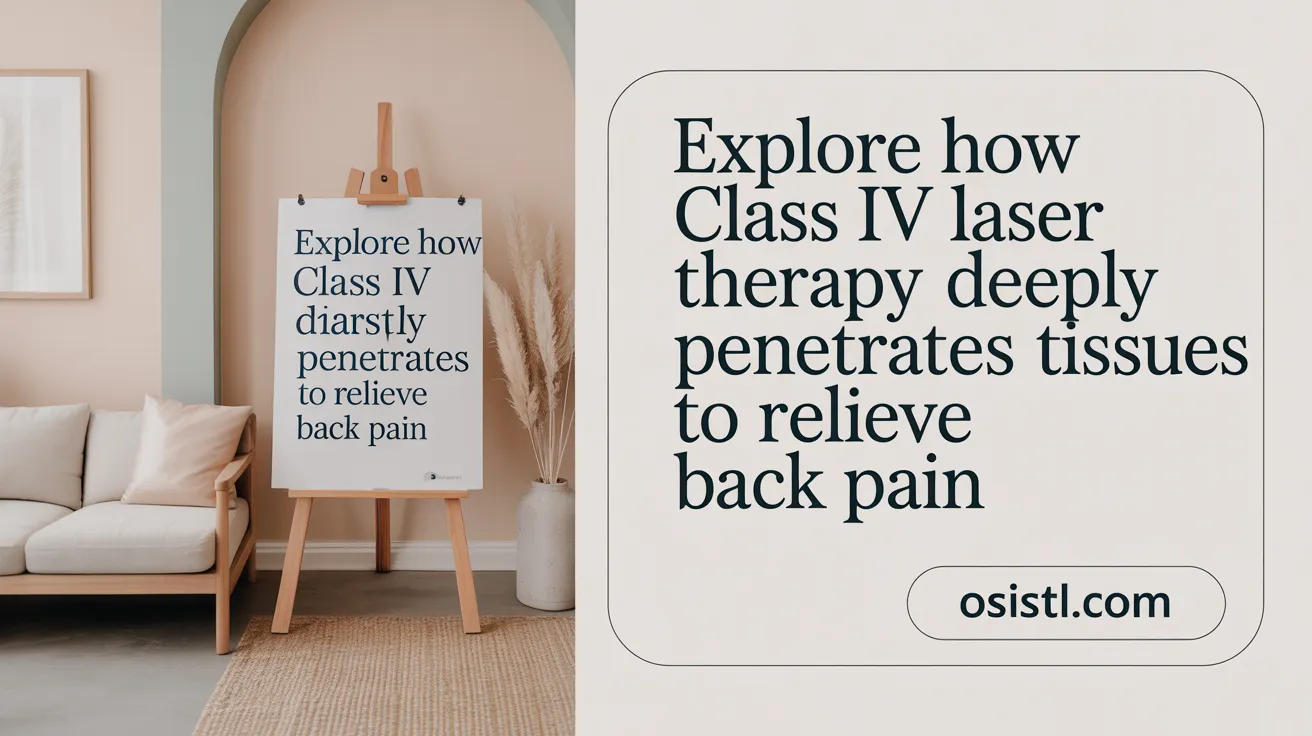
What is Class IV Laser Therapy and how does it work for treating back pain?
Class IV Laser Therapy is a non-invasive treatment that uses high-powered laser light to penetrate deep tissues in the body. Unlike lower-level lasers, such as low-level laser therapy (LLLT), Class IV lasers operate at power levels above 500 milliwatts, often reaching up to 10 watts. This higher power allows for deeper tissue penetration, making it particularly effective for chronic and deep musculoskeletal conditions like back pain.
During a treatment session, a trained professional directs the laser beam onto the affected area, where the laser light interacts with cellular structures without causing any tissue damage. Patients usually experience a soothing warmth or mild tingling sensation, with no pain involved. Typically, sessions last between 5 to 20 minutes, and multiple treatments are recommended to achieve optimal results.
In cases of back pain, these deep tissue effects help reduce inflammation, accelerate tissue repair, and promote overall healing. Many patients report immediate pain relief during or shortly after treatment, with cumulative benefits over the course of several sessions.
What is the biological basis and mechanism behind the effects of laser therapy?
The core biological mechanism behind Class IV laser therapy is photobiomodulation. When the laser light penetrates the tissue, it is absorbed by the mitochondria—the energy-producing structures within cells. This absorption stimulates a cascade of biochemical reactions, primarily increasing the production of adenosine triphosphate (ATP), which is the main energy source for cellular activities.
Enhanced ATP production energizes cells, boosting their ability to repair and regenerate damaged tissues. Additionally, laser therapy modulates inflammatory processes by reducing the release of pro-inflammatory mediators, thus diminishing swelling and pain.
This cellular stimulation also promotes increased blood flow and oxygenation to the affected area, further supporting healing and reducing oxidative stress. These combined effects help alleviate chronic back pain, improve mobility, and accelerate recovery.
Difference between Class IV and lower-level lasers
Class IV lasers differ significantly from lower-level lasers in terms of power output and depth of penetration. While low-level lasers (LLLT) operate under 500 milliwatts and are mainly used for superficial tissue treatment, Class IV lasers deliver higher energy output (above 500 mW). This allows for deeper tissue reach, making them suitable for more severe or chronic conditions.
Furthermore, Class IV lasers can deliver higher doses of energy efficiently, leading to faster and more substantial healing responses. Their ability to target deep tissues makes them a valuable tool in pain management and tissue regeneration.
How the therapy treats back pain specifically
For back pain, Class IV laser therapy works by targeting affected musculature, ligaments, and soft tissues deep within the spinal area. The laser’s energy promotes cellular regeneration, reduces inflammation around inflamed or injured tissues, and decreases nerve sensitivity, which collectively ease pain.
Patients often experience immediate relief with each session, and the therapy's boost to tissue healing reduces the need for longer-term medications or invasive procedures. With consistent treatment, many individuals find improved range of motion and decreased discomfort, making Class IV laser therapy a promising option for managing chronic back pain effectively.
Benefits and Advantages of Class IV Laser Therapy in Back Pain Management
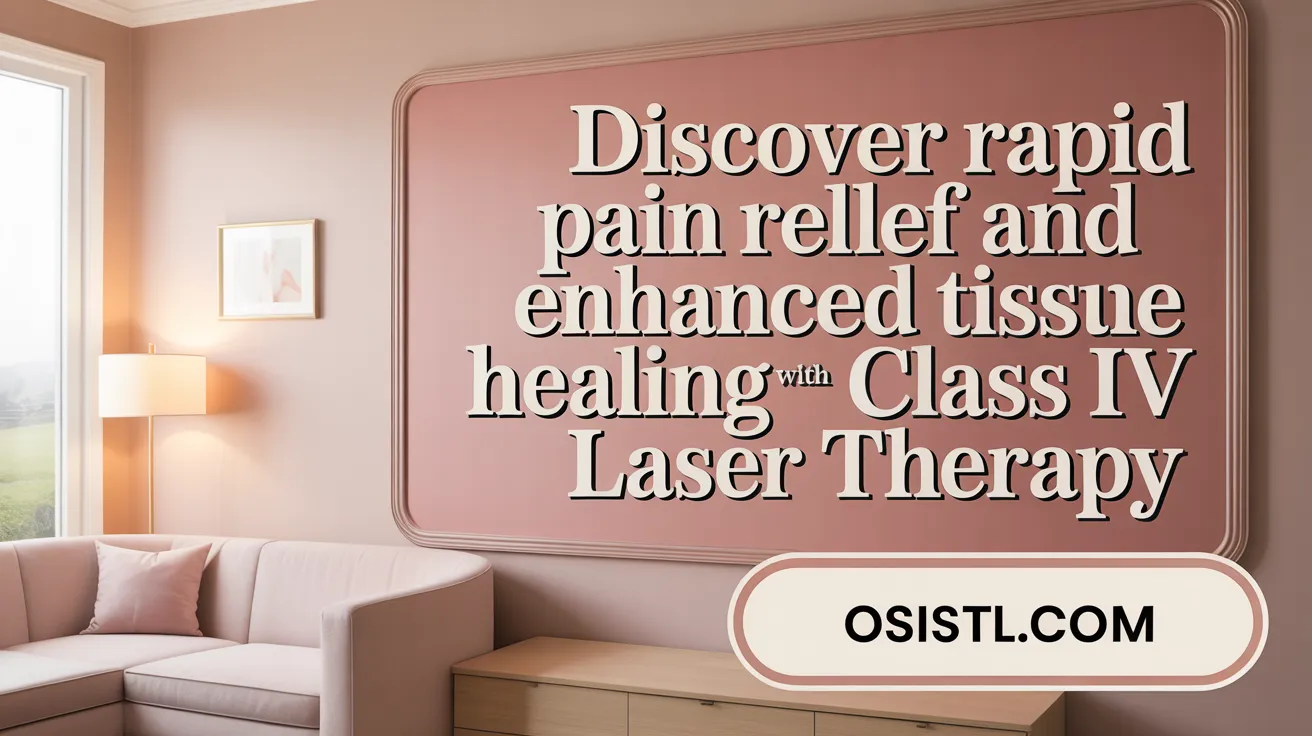
What are the benefits and advantages of Class IV Laser Therapy for managing back pain?
Class IV Laser Therapy offers many notable benefits that make it an appealing option for those suffering from back pain. This advanced treatment uses high-powered laser light capable of penetrating deep into tissues, which helps stimulate cellular activity and accelerate the body's natural healing processes (photobiomodulation).
One of the most immediate advantages is pain reduction. Many patients experience significant relief after just a few sessions because the laser reduces nerve sensitivity and decreases inflammation efficiently (pain relief with Class IV laser therapy). This rapid effect often enhances overall comfort and enables quicker recovery.
In addition to pain relief, Class IV Laser Therapy promotes tissue healing and regeneration. It boosts blood flow and oxygen delivery to damaged areas, supporting tissue repair and reducing swelling (inflammation reduction). This not only alleviates current symptoms but also helps prevent future issues.
The therapy is completely non-invasive and painless, often described as relaxing, with patients feeling a soothing warmth during the session (pain-free laser treatment experience). Since it involves no drugs or surgical procedures, it is a safe alternative or supplement to conventional treatments, with minimal risks or side effects (non-invasive pain treatment).
Moreover, this therapy is suitable for both chronic and acute back pain conditions, including disc degeneration, sciatica, muscle spasms, and post-injury recovery (conditions treated by Class IV laser therapy, back pain treatment options). Its ability to effectively target deep tissues makes it particularly beneficial for severe or long-standing pain that might not respond well to other treatments (deep tissue laser treatment).
In summary, Class IV Laser Therapy provides a safe, effective, and fast-acting solution for managing back pain. Its capacity to reduce inflammation, promote healing, and improve mobility makes it a valuable tool in the comprehensive management of back and musculoskeletal conditions (benefits of laser therapy).
Scientific Evidence Supporting Class IV Laser Therapy for Back Pain
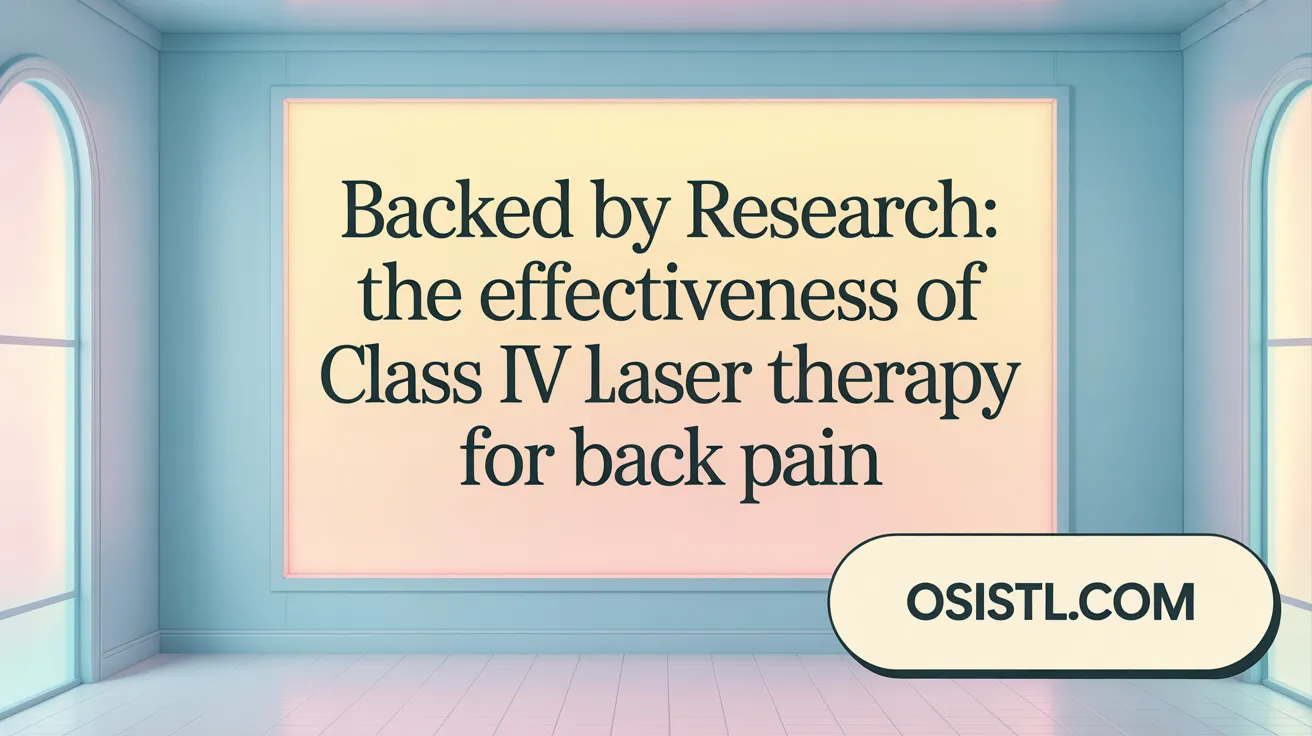 Numerous clinical studies, randomized controlled trials, and systematic reviews underpin the scientific support for Class IV Laser Therapy as an effective treatment for back pain. For instance, research involving the FDA-cleared Erchonia FX 635 laser has shown significant relief in patients suffering from chronic low back pain, with many reporting immediate pain reduction and sustained improvements over subsequent sessions. These studies highlight that higher-powered lasers, which enable deeper tissue penetration, stimulate cellular activity, promote healing, and decrease inflammation.
Numerous clinical studies, randomized controlled trials, and systematic reviews underpin the scientific support for Class IV Laser Therapy as an effective treatment for back pain. For instance, research involving the FDA-cleared Erchonia FX 635 laser has shown significant relief in patients suffering from chronic low back pain, with many reporting immediate pain reduction and sustained improvements over subsequent sessions. These studies highlight that higher-powered lasers, which enable deeper tissue penetration, stimulate cellular activity, promote healing, and decrease inflammation.
Meta-analyses investigating laser therapy for lumbar disc herniation and degenerative disc disease demonstrate notable decreases in pain levels and disability scores, although the certainty of evidence varies among studies. The mechanism of photobiomodulation involves increasing ATP production within cells, thus accelerating tissue repair and reducing nerve sensitivity.
In addition to effectiveness, safety profiles of Class IV Laser Therapy are strong. Most reports point to minimal adverse effects, such as temporary warmth or redness at treatment sites, with no reports of serious side effects or tissue damage. This safety, combined with its non-invasive nature, makes it a suitable alternative or complement to traditional treatments like medication or surgery.
Compared to lower-level laser therapies, Class IV Laser Therapy delivers higher energy levels that penetrate deeper into tissues, resulting in quicker and more profound therapeutic effects. Its FDA clearance affirms its regulatory safety and efficacy, further supported by extensive research and clinical application across various musculoskeletal conditions.
In summary, the scientific evidence strongly indicates that Class IV Laser Therapy is a safe and effective modality for reducing back pain, improving function, and supporting tissue healing, backed by rigorous clinical studies and regulatory approval.
Class IV Laser Therapy Versus Traditional and Non-Surgical Back Pain Treatments
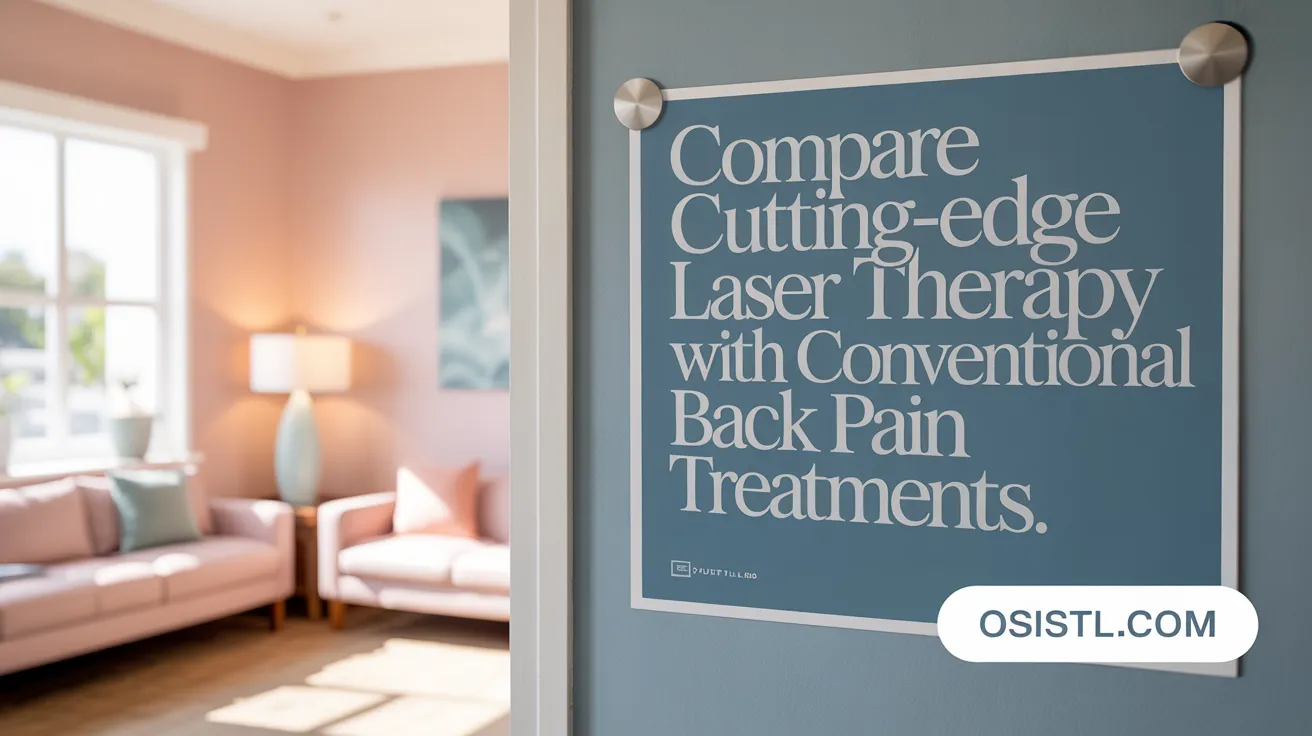
How does Class IV Laser Therapy compare to traditional and other non-surgical treatments for back pain?
Class IV Laser Therapy provides a modern, non-invasive alternative to traditional back pain treatments such as medications and surgery. It employs high-powered lasers that penetrate deep into tissues, stimulating cellular repair and reducing inflammation without the need for drugs or invasive procedures.
Unlike medications, which can have side effects and only temporarily mask pain, laser therapy promotes natural healing by increasing blood flow and oxygenation, photobiomodulation, and accelerating recovery in the affected areas. This can lead to faster recovery times and lasting improvements in pain and mobility.
Compared to surgery, laser therapy offers a safer option with minimal risk, no downtime, and no associated surgical risks like infections or complications. It is particularly effective for conditions like degenerative disc disease, sciatica, and muscle strains when used early in treatment.
Research supports its efficacy, showing significant pain reduction and tissue regeneration (clinical studies on Class IV laser therapy). Plus, because it’s a targeted treatment, it can focus on specific problematic tissues, providing relief that’s often quicker than conventional methods (Benefits of Class IV Laser Therapy).
Advantages of deep tissue penetration and targeted therapy
One of the main benefits of Class IV Laser Therapy is its ability to reach deeper tissues than lower-powered laser treatments. The high power output allows the laser light to pass through skin, fat, and muscle to target pain sources in ligaments, tendons, and joints.
This deep penetration results in effective stimulation of cellular activity—especially in muscles and nerves—accelerating healing processes. It promotes reduced nerve sensitivity and endorphin release, improving comfort.
Moreover, the therapy’s wavelength specificity means it can be tailored for different tissue depths and conditions, optimizing therapeutic outcomes.
Integration with other therapeutic modalities
Class IV Laser Therapy is versatile and often used alongside other treatments like physical therapy, chiropractic care, or acupuncture. Combining modalities can enhance results, addressing multiple aspects of back pain.
For example, laser therapy can reduce inflammation and pain quickly, allowing physical therapy exercises to be more effective and less painful (Laser therapy benefits for pain and inflammation).
Faster recovery and fewer side effects compared to conventional treatments
Patients undergoing laser therapy typically experience rapid symptom relief, sometimes after just one session. The process is pain-free, with a warming or tingling sensation, and minimal risk of side effects (safe and effective Class IV laser therapy).
In contrast, long-term use of medications might lead to gastrointestinal issues or dependency, and surgery carries inherent risks and longer recovery periods (7 ways to treat chronic back pain without surgery).
Overall, Class IV Laser Therapy’s safety profile, effectiveness, and capacity for quick symptom relief make it an excellent adjunct or alternative to conventional back pain treatments, supporting faster, safer recovery and improved quality of life (Benefits of Class IV Laser Therapy).
Back Pain Conditions Effectively Treated by Class IV Laser Therapy
Which back pain conditions can be treated effectively with Class IV Laser Therapy, especially chronic cases?
Class IV Laser Therapy offers an effective non-invasive pain treatment option for managing various chronic back pain conditions. It is particularly beneficial for degenerative disc disease, osteoarthritis of the spine, radiculopathy, and sciatica. These conditions often involve inflammation reduction, nerve irritation, and tissue degeneration, which respond well to deep tissue stimulation provided by high-powered laser therapy.
This treatment works by penetrating deep into tissues to stimulate cellular repair and reduce inflammation. It promotes increased blood flow, oxygenation, and tissue regeneration—factors essential for healing affected joints, discs, and nerves.
Patients with soft tissue injuries such as muscle strains and ligament sprains, as well as those suffering from nerve-related pain, find relief through this therapy. It reduces nerve hypersensitivity and fosters long-term pain reduction, making it suitable for chronic cases where traditional therapies may have limited success.
By enhancing circulation and accelerating cellular repair processes, Class IV Laser Therapy improves both pain levels and functional capacity. It helps restore mobility and diminishes the need for prolonged medication or invasive procedures, offering a promising approach for lasting back pain relief.
Evaluating Suitability and Safety of Class IV Laser Therapy for Individuals
Patient assessment and consultation guidelines
Before initiating Class IV Laser Therapy for back pain, patients should undergo a thorough assessment by trained healthcare professionals. This includes reviewing medical history, current health status, and specific pain conditions. Detailed consultation helps determine if laser therapy aligns with the individual’s treatment goals and if other underlying health issues might affect suitability.
Contraindications and precautions
Class IV Laser Therapy is generally safe but not suitable for everyone. Contraindications include pregnancy (especially over the abdomen or lower back), active cancer, infections, or use in areas with overgrowth plates in children. Patients with pacemakers, pain pumps, or photosensitive medications should inform providers as these can interfere with treatment. Special care is taken around areas with glandular tissue and near the eyes.
Safety protocols including eye protection and treatment environment
Safety measures are critical during laser therapy. Patients and providers must wear protective goggles designed for the specific wavelength used to prevent eye injury. The treatment area should be controlled to prevent accidental exposure to laser light outside designated zones. The therapy is conducted in a controlled environment with appropriate signage and barriers to maintain compliance with safety standards.
Side effects and risk management
Side effects from Class IV Laser Therapy are rare and usually mild. They may include temporary redness, warmth, tingling, or minimal discomfort at the treatment site. Thermal injuries are a risk if safety protocols are not followed, especially concerning eye protection. Careful monitoring during each session minimizes risks. Providers should tailor the treatment parameters—like wavelength and energy dose—to the patient's condition. Overall, when performed by trained professionals under strict safety procedures, Class IV Laser Therapy offers a safe and effective option for back pain relief.
| Aspect | Safety Consideration | Additional Notes |
|---|---|---|
| Eye protection | Mandatory for patient and provider | Use wavelength-specific protective goggles (see details) |
| Treatment environment | Controlled access and signage | Prevent accidental exposure (learn more) |
| Contraindications | Screen for pregnancy, cancer, infections | Ensure no metal implants or photosensitivity (guidelines) |
| Side effects | Minimal; temporary redness, warmth, tingling | Monitor patient response and adjust treatment (clinical evidence) |
| Safety protocols | Follow professional guidelines | Regular training and equipment checks (safety information) |
Integrating Class IV Laser Therapy into Comprehensive Back Pain Management
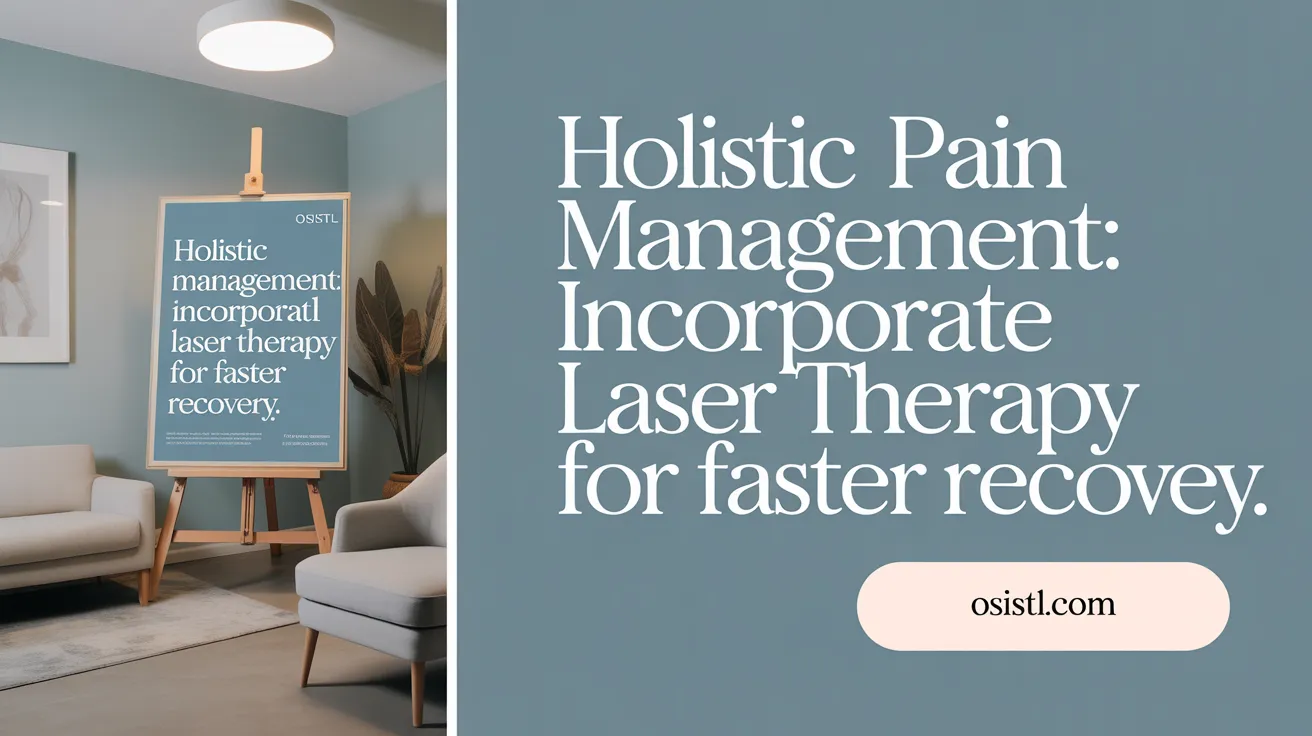 Class IV Laser Therapy plays an increasingly important role as a modern, non-invasive treatment option for back pain. It acts as a valuable component within a multifaceted approach, working alongside physical therapy, medication, and lifestyle modifications to enhance overall treatment effectiveness.
Class IV Laser Therapy plays an increasingly important role as a modern, non-invasive treatment option for back pain. It acts as a valuable component within a multifaceted approach, working alongside physical therapy, medication, and lifestyle modifications to enhance overall treatment effectiveness.
As a complementary therapy, Class IV Laser Therapy stimulates cellular activity deep within tissues, promoting accelerated healing and a reduction in inflammation. Patients often experience immediate pain relief during sessions, with long-term benefits including improved mobility and decreased discomfort.
The outcomes of incorporating Class IV Laser Therapy into back pain management are notable. Patients typically report significant pain relief, faster tissue repair, and reduced inflammation, all of which contribute to a better quality of life. When combined with other treatments, it can minimize dependence on medications and delay or even avoid surgical interventions.
Overall, this therapy not only alleviates pain but also helps restore normal function, allowing patients to return to daily activities faster. Its safety, minimal side effects, and proven efficacy make it a promising addition to comprehensive back pain treatment plans.
For those seeking a modern, effective solution, integrating Class IV Laser Therapy can provide significant improvements in pain management, healing speed, and overall well-being.
A Bright Future for Back Pain Relief
Class IV Laser Therapy represents a new frontier in managing back pain, combining advanced technology with a deep understanding of cellular biology to offer patients effective, non-invasive relief. Backed by extensive scientific research and clinical evidence, this therapy addresses the root causes of pain by stimulating healing, reducing inflammation, and restoring function. Its compatibility with other treatments and excellent safety profile make it a versatile addition to comprehensive back pain care strategies. As awareness and accessibility grow, Class IV Laser Therapy holds promise to improve the lives of countless individuals suffering from chronic and acute back pain, providing hope where traditional methods may fall short.
